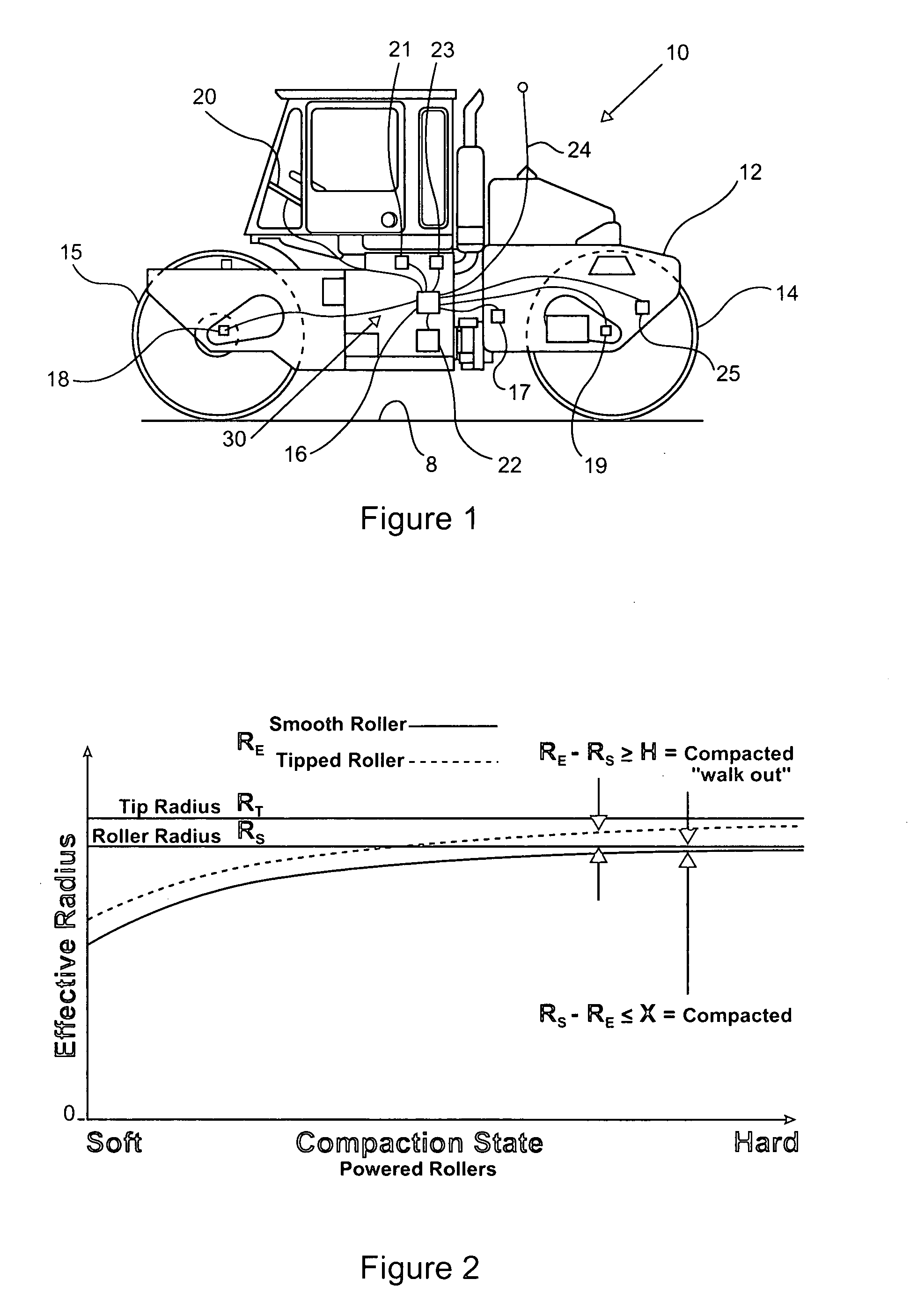Compaction quality assurance based upon quantifying compactor interaction with base material
a compactor and compactor technology, applied in the direction of specific gravity measurement, instruments, roads, etc., can solve the problems of incomplete quality assurance test at one location, inability to quantify the interaction between compactor and base material, and inability to accurately determine the quality of compaction
- Summary
- Abstract
- Description
- Claims
- Application Information
AI Technical Summary
Benefits of technology
Problems solved by technology
Method used
Image
Examples
Embodiment Construction
[0019]Referring to FIG. 1, a compactor 10 includes a pair of rollers 14 and 15 that are rotatably attached to a chassis 12. Although compactor 10 is self propelled, the present invention finds potential application to towed compacting rollers as well. In addition, although rollers 14 and 15 are shown as smooth for an application such as asphalt, the present invention also finds potential application to tipped rollers used in applications such as compacting waste in a landfill or compacting soil for other earthworks construction. Compactor 10 includes an onboard computer 16 that can receive signals from various inputs including sensors 17–19, 21, 23, and 25 and a position data receiver 24. Computer 16 includes a compaction algorithm that processes the sensor data to determine a compaction state of the base material 8, preferably in real time as compactor 10 is moving over the base material. This compaction data can then be stored in data storage device 22 and / or displayed to an opera...
PUM
| Property | Measurement | Unit |
|---|---|---|
| density | aaaaa | aaaaa |
| roller radius | aaaaa | aaaaa |
| energy | aaaaa | aaaaa |
Abstract
Description
Claims
Application Information
 Login to View More
Login to View More - R&D
- Intellectual Property
- Life Sciences
- Materials
- Tech Scout
- Unparalleled Data Quality
- Higher Quality Content
- 60% Fewer Hallucinations
Browse by: Latest US Patents, China's latest patents, Technical Efficacy Thesaurus, Application Domain, Technology Topic, Popular Technical Reports.
© 2025 PatSnap. All rights reserved.Legal|Privacy policy|Modern Slavery Act Transparency Statement|Sitemap|About US| Contact US: help@patsnap.com



